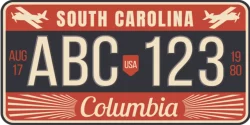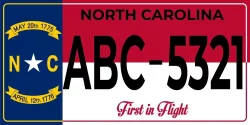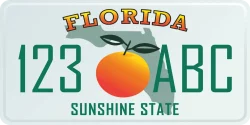Home » IRS Mileage Rates by State » Maryland Mileage Rate
Last updated: October 20, 2025
Accurate mileage logging is the foundation of maximizing your deductions with the IRS Mileage Rate Maryland. Maryland’s mix of dense traffic corridors, mountain grades in the west, and seasonal coastal congestion can make consistent recordkeeping surprisingly difficult. Between the I-95 and I-495 corridors, Bay Bridge backups, and diverse driving environments, you need a system that doesn’t miss a mile.
In this guide, you’ll learn the 2025 rates, how state-level reimbursement works, and how to estimate real-world deduction potential in Maryland. You’ll also get practical examples, regional tips, and job-specific insights. And when you’re ready to act, MileageWise offers efficient soultions that keeps you audit-ready.

Table of Contents
Summary
- 2025 standard mileage rates: $0.70/mi (business), $0.21/mi (medical/moving for active-duty military), $0.14/mi (charitable).
- Deduction potential: Frequent regional trips in Maryland can yield substantial annual savings when every mile is captured accurately.
- Local basics: Some Maryland employers use the IRS rate as a benchmark, but requirements vary—know your organization’s policy and federal wage rules.
- MileageWise’s Solution highlight: Google Maps Timeline import feature converts your Timeline exports into IRS-compliant logs fast, reducing errors and saving time.
Maximizing Your Deduction Potential in a Single Day
Germantown → Frederick (22 mi)
Frederick → Westminster (30 mi)
Westminster → Germantown (35 mi)
Total miles: 87 miles
Deduction: 87 × $0.70 = $60.90
Salisbury → Cambridge (33 mi)
Cambridge → Easton (47 mi)
Easton → Salisbury (47 mi)
Total miles: 127 miles
Deduction: 127 × $0.70 = $88.90
IRS Mileage Rate Maryland: Key Insights into State-Specific Reimbursement
Starting in January 2025, the IRS standard mileage rate for business use is set at $0.70 per mile for state employers, covering vehicle expenses like gas and maintenance. Maryland offers a lower reimbursement of $0.35 per mile for employees using personal vehicles instead of state-owned ones.
However, private employers in Maryland are not required to reimburse this amount, though many use the IRS rate for simplicity.
The Fair Labor Standards Act (FLSA) ensures employees earn at least the federal minimum wage after mileage reimbursements. Additionally, Workers’ Compensation Law mandates mileage reimbursement for injured workers traveling to medical treatments related to their injuries.
General note: tolls and parking are not part of the IRS mileage rate and are typically handled separately, while electric vehicles remain eligible because the rate reflects overall operating costs, not just fuel.
This page is informational and not legal or tax advice—if you need guidance for your situation, consult a qualified tax professional. For broader guidance, see our overview: IRS Mileage Rates by State.
2025 Mileage Rate
- Business Mileage Rate: $0.70 per mile for qualifying business driving; use this to calculate reimbursements and tax deductions for business travel.
- Medical/Military Moving Mileage Rate: $0.21 per mile for eligible medical drives and active-duty military moving.
- Charitable Mileage Rate: $0.14 per mile when driving in service of qualified charitable organizations.
What Mileage Reimbursement Really Means for You
| Route (one-way) | Approx. miles | 2025 value |
|---|---|---|
| Baltimore → Annapolis | 32 mi | $22.40 (RT $44.80) |
| Rockville → Gaithersburg | 6 mi | $4.20 (RT $8.40) |
| Silver Spring → Laurel | 14 mi | $9.80 (RT $19.60) |
| Bowie → Annapolis | 17 mi | $11.90 (RT $23.80) |
| Cumberland → Frostburg | 8 mi | $5.60 (RT $11.20) |
| Baltimore → Frederick | 50 mi | $35.00 (RT $70.00) |
| Severna Park → Oakland | 205 mi | $143.50 (RT $287.00) |
| Walkersville → Crisfield | 210 mi | $147.00 (RT $294.00) |
| Baltimore → Ashton | 85 mi | $59.50 (RT $119.00) |
| Columbia → Hacock | 90 mi | $63.00 (RT $126.00) |
Values calculated at the 2025 business rate of $0.70/mi.
Driving Across Regions: The Unique Impact of Different Terrains
- Central Maryland (Baltimore–Washington corridor): Expect stop-and-go on I-95 and the Beltway (I-495), where peak-hour congestion extends business travel times and complicates mileage estimates.
- The Eastern Shore: Seasonal traffic toward Ocean City and backups near the Bay Bridge can make a mid-day drive feel like rush hour. Weather on the Shore can bring dense fog and coastal wind, which slows driving and extends routes.
- Western Maryland: Mountain grades, winter snow and ice, and limited alternate routes mean detours can add miles quickly. In smaller towns, fewer direct highways can create longer “triangle” loops to reach multiple clients.
Who benefits most from the IRS Mileage Rate Maryland
- Home health and hospice nurses
- Real estate agents and brokers
- Field service technicians (HVAC, electrical, plumbing)
- Construction project managers and estimators
- Nonprofit outreach coordinators and fundraisers
- IT consultants and on-site support specialists
- Legal process servers and couriers
- Home inspectors and appraisal professionals
- Sales representatives and territory managers
- Property managers with multi-site portfolios

Mileage Logging in practice + MileageWise solutions
Maryland’s varied terrain and traffic patterns make “just remembering” trips unreliable. Congestion along I-95 and I-495, Bay Bridge delays, and route changes near downtowns can easily lead to gaps in your records. Western Maryland’s winter conditions and elevation changes stretch drive times and alter routes at the last minute. On the Eastern Shore, seasonal traffic can turn a two-stop route into a three-hour loop.
Even if you plan perfectly, client cancellations and reschedules reshape your day. That’s why you need a consistent system that captures every trip without fuss. Without IRS-compliant documentation, reimbursements and deductions are at risk. With the right tools, though, building a bulletproof mileage log is faster and simpler than it looks.
MileageWise offers three solutions:
1. Google Maps Timeline Import: Simple Solution
MileageWise converts your exported Google Maps Timeline Data into a structured, IRS-proof mileage log in minutes—no manual spreadsheet cleanup. It flags inconsistencies with a built-in IRS Auditor that checks for 70 potential issues before you export.
2. AI Wizard Mileage Log Generator: when Timeline is missing/incomplete
If your Timeline is incomplete or missing, the AI Wizard Mileage Log Generator reconstructs past trips based on your driving patterns and client locations, filling gaps and aligning with odometer entries.
3. MileageWise’s Mileage Tracker: Going Forward
For future drives, the ad-free Mileage Tracker App tracks trips precisely with a battery-friendly, privacy-respecting approach and exports IRS-ready reports whenever you need them. It reduces human error, eliminates missed trips, and keeps you audit-ready all year.
Quick story: A Maryland healthcare professional fixes missing logs
Erica, a home health nurse in Baltimore County, spent weeks juggling patient visits across Parkville, Towson, and Dundalk. Between tight schedules and last-minute changes, she forgot to log several days of drives. When tax time came, she realized those missing miles could cost her hundreds. Erica exported her Google Maps Timeline Data from her phone. With MileageWise’s Google Maps Timeline import, she transformed that export into an IRS-compliant mileage log in minutes. The built-in IRS Auditor flagged a few anomalies—she reviewed and fixed them quickly. By the end of the day, Erica had a complete, accurate report ready for her records and reimbursement. No stress, no guesswork.
Conclusion
Maryland’s driving realities—urban congestion, coastal bottlenecks, and mountain routes—make consistent, accurate logging essential. The IRS Mileage Rate Maryland turns those work miles into real value, but only if your documentation is solid.
Whether you’re crossing the Bay Bridge, navigating the Beltway, or serving clients in Allegany County, a reliable system ensures nothing slips through the cracks. Accurate logs protect your deductions, support reimbursements, and minimize audit risk.
In Maryland, tracking every mile isn’t just smart—it’s money in your pocket. With the right process, it’s easier than you think. MileageWise helps with three solutions:
- Google Maps Timeline Import feature: Convert your Timeline export into an IRS-compliant mileage log, fast.
- AI Wizard Mileage Log Generator: If you don’t have Timeline data, this feature reconstructs missing trips and fills gaps automatically with rules that fit your work and deduction targets.
- MileageWise Mileage Tracker App: Track every drive going forward with an ad-free, battery-friendly app that outputs audit-ready reports.
These tools work together so you can start from any point: import what you have, rebuild what’s missing, and automate the future. For Maryland drivers who juggle urban, rural, and seasonal routes, this flexibility is crucial. If your objective is maximizing deductions and staying compliant, this is the simplest path. Start where you are and build forward with confidence.
Ready to turn miles into money? Try MileageWise and make the IRS Mileage Rate Maryland
AI Logs & Google Timeline Import
Try MileageWise for free for 14 days. No credit card required!
FAQ
Do private employers in Maryland have to reimburse at the IRS rate?
Private employers are not required to use the IRS rate, though many adopt it as a fair standard; always check your company policy and ensure wages meet FLSA requirements after expenses.
Are Maryland state employees reimbursed using the IRS rate?
Maryland practices may align with the $0.70/mi business rate for state employees’ business use, and some state roles may use a lower $0.35/mi when personal vehicles substitute for state-owned cars.
Are tolls and parking included in the IRS rate?
No—tolls and parking are separate from the standard mileage rate; track them independently for reimbursement or deduction purposes as allowed.
Does the IRS mileage rate apply to electric vehicles in Maryland?
Yes—the IRS rate reflects overall operating costs (not just gasoline), so EVs qualify for the mileage rate when used for eligible purposes.
What records do I need for an IRS-compliant mileage log?
Keep the date, purpose, start and end locations, trip mileage, and odometer readings; consistency and completeness are key to a solid, audit-ready log.








